Teachers biographies and class descriptions of the contactfestival 2017!
LEVELS:
The classes are not divided into levels. In case the teacher found it necessary to ask for certain abilities you will find it inside their class description.
Please read the descriptions and respect your own limits.
In the registration process you will choose your intensive. Just make your decision depending on the themes of the intensives. The classes you can choose spontaneously at the Festival.
On the first day the focus will be on Contact Improvisation principles.
|
| |
|
last update 24th of July 17 |
|
| INTENSIVES |
|
| Ann Cooper Albright |
USA |
|
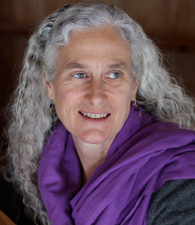 |
Ann Cooper Albright is Professor and Chair of Dance at Oberlin College and President of the Society of Dance History Scholars. This past year she has been leading workshops in Athens, Greece, Seoul, Korea, and Berlin, Germany – all places where public protest is alive and well, and invigorated by conversations with artists from all disciplines. She has been teaching and dancing Contact Improvisation for over two decades and this work informs her latest book, Gravity Matters: finding ground in an unstable world. Combining her interests in movement and cultural theory, she is involved in teaching a variety of courses that seek to engage students in both practices and theories of the body. She is the author of many books, including Engaging Bodies: the Politics and Poetics of Corporeality (2013), which won the Selma Jeanne Cohen Prize from the American Society for Aesthetics; Choreographing Difference: the Body and Identity in Contemporary Dance (1997) and co-editor of Moving History/Dancing Cultures (2001) and Taken By Surprise: Improvisation in Dance and Mind (2003). The book, Encounters with Contact Improvisation (2010), is the product of one of her adventures in writing and dancing and dancing and writing with others. Ann is founder and director of Girls in Motion, an award winning after school program in the Oberlin public schools and co-director of Accelerated Motion: Towards a New Dance Literacy. |
|
| Training a Political Body: responsiveness, resistance, and resilience |
|
How do we train for a political body – one that is responsive, resistant, and resilient? How do we engage our citizenship as dancers? Bridging the divide between political action and somatic instruction, this intensive draws on practices informed by Contact Improvisation and Body-Mind Centering to explore how intentional physical training can provide an embodied ground for our activism. We will move together in a way that is safe and connected, but still allows for the intensity of anger and resistance. Rather than neutralizing our bodies and our identities, we will learn how to engage our feelings and our politics without getting stuck in self-righteousness. This workshop is open to everybody but requires that participants be willing to dance, sing, write and move together.
|
|
| |
|
|
|
| Benoît Lachambre |
CDN |
 |
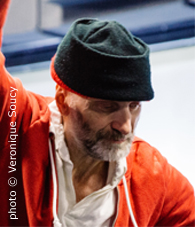 |
Active in the dance community since the 1970’s, he learned about Releasing in 1985. This kinesthetic approach to movement and its use of improvisation became an important influence on his choreographic work. He decided to immerse himself in an exploratory approach to movement and its sources, to seek out the authenticity of movement while de-colonizing the body from its institutional practices.
He founded his own company in Montréal in 1996, christening it Par B.L.eux, ‘B.L.’ for his own initials and ‘eux’ for the artists he chooses to create with, and who have become central to his artistic process. Thanks to collaborations with internationally-renowned choreographers and artists from diverse disciplines such as Boris Charmatz, Sasha Waltz, Marie Chouinard, Louise Lecavalier, Meg Stuart and musician Hahn Rowe, Benoît Lachambre develops and promotes his approach to dance with his company Par B.L.eux as his artistic platform. With the educational programs developed by Benoît Lachambre, Par B.L.eux invests in the promotion of singular techniques and approaches in dance such as Releasing, improvisation, composition, and body consciousness. Many workshops have been given over the past 15 years, at such places as Tanz Im August (Berlin, Germany), ImPulsTanz (Vienna, Austria), Circuit Est and Usine C (Montréal, Canada), P.A.R.T.S (Brussels, Belgium), SNDO (Amsterdam, The Netherlands) and Atelier de Paris – Carolyn Carlson (Paris, France). Benoît Lachambre is one of the foremost artist-choreographer-performers of his generation. www.parbleux.qc.ca |
|
Body, relationships and perceptions measures
|
|
This workshop unfolds around the idea of movement in a particular time and space, a living space. It is an invitation to a deep exploration of a more authentic consciousness of the connection between possible and potential bodies. Participants will be invited to question and reflect upon existence, and how they perceive empathetic movement in the process of choreographic creation.
Exploring notions of Somatics, as well as the distribution of weight and gravitational forces, Benoit Lachambre offers the opportunity to re-connect with a choreography of feeling, of the immutable.
Using notions of connection, building corporeal and spatial architectures in flux, Benoît Lachambre aims to re-create the connections between beings, and free them from their constant pressure. At the heart of his practice is his desire to free the body from all political, socio-cultural and aesthetic hierarchy, reducing them to their simplest energetic, organic and perceptive function. Our consciousness can be heightened through the dynamism of the connection that exists between bodies, between beings.
|
|
|
|
| Cristina Turdo |
RA |
|
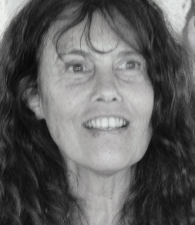 |
is involved in the transmission, practice, research and dissemination of CI since the late 80s. Her practice was influenced by Physical Improvisation, Oriental Arts Studies, Chinese Medicine, Theater, Yoga, Somatic Practices such as BMC and Feldenkrais.
Between 99 - 06 she produced the International CI Festival in Buenos Aires. She is currently teaching at the UNA Universidad Nacional de Arte, and at the Postgraduate programm "New Dance Trends". Assiduously she teaches in Brazil, Chile, Uruguay, Peru.
Since 2011 she is part of “Momentum”, a group with focus on CI Perfomances research. She goes ahead with the “HAbitAt Project”, an urban CI intervention. With the support of the UNA (University of Art), she coordinates LABs of Zen Meditation and Dance Improvisation.
She is the founder of "Expanding Fronteras Project" that aims at the exchange between teachers and artists of improvisation from different countries and cultures. |
|
| Implicit Forces - Living Geography |
|
To Be In Relation - Being Bond - Communication - Habitat
We will explore what I've been calling Implicit Forces IF, I mean those forces that are beyond, behind and also inside us.
Recognizing ourselves as a Living Geography, we will explore CI principles in relation to Implicit Forces, such as dynamic balance, physical communication through touch, dynamics of the shared weight, in relation with gravity, momentum and others subtle IForces.
We will be practicing an open perception to expand awareness towards a state of Mindfulness, using principles of Zen Meditation, valuing uncertainty, empty space, and reaching a full presence while embracing the unknown.
We will be diving into different states of matter like stillness (rest) and motion to nourish and develop an improvisational state of our dance.
Physical information will be provided by different systems: Muscle-Skeleton System, Nervous-Fluid System and others, as well as by the neurological patterns of movement. Some of the question that I'm interested in, are: What moves me? What moves us? From where I communicate? How I Bond? How you-we deal with the unknow territory?
Language: the classes will be taught in spanish with translation into english
|
| Franck Beaubois |
F |
|
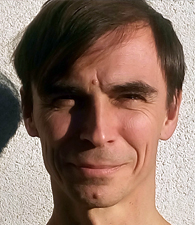 |
Graduated from Art Schools in France, he discovered dance during a workshop dedicated to visual artists, then studied dance at Nice University. He has trained intensively in Contact Improvisation and shares the practice in numerous contexts.
Improvisation and collaborative processes are central to his work. From '92 to '96 he did photogram performances on b/w paper. For 7 jours de vie en zone sensible, he lived together with Mathieu Vincent for one week in a dark room on a 30m2 paper sheet, making an image with the shadows of their bodies, food and waste.
For 20 years he has collaborated with his partner Patricia Kuypers on structured improvised pieces. They co-organize an independent studio project dedicated to dance research through workshops and laboratories. As part of the Brussels Tuning Group, he's been studiyng the artwork of Lisa Nelson, joining observatories and performances of the artist. He has engaged in dance projects based on Improvisation - recently with Géraldine Keller, Kirstie Simson, Nesphesh Group and Omedoc Orchestra.
With support of the artist programmer Michael Egger he developed dance real time video pieces, like Delay and Panoramique. These pieces have been played regularly in Europe since 2004. |
|
Sensation scape
|
|
Facilitated by the common ground of Contact Improvisation, we dive into an environment made of bodies. To warm up, we travel through some spaces of the body: from eye to hand, back to front, left to right. We listen to our breathing, its timing, how it vibrates in the tissues, when it becomes sound. By watching the entering and exiting of stimuli, we discover layers of sensations that appear in the present. Sometimes we allow ourselves to linger on nuances and transformations. From stillness to movement, we turn our attention to information provided by the senses. Can we delay our desire to make sense? Can we track the sensation of movement?
Scores sets up situations of specific interactions with partners, engaging in a physical dialogue about what moves us.
By increasing speed and weight we trigger reflexes and observe the connection to sensations under those changing conditions.
We explore the range of dynamics between delayed and spontaneous responses.
|
|
|
|
|
| Isabelle Üski |
F |
|
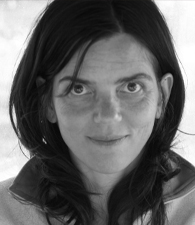 |
Isabelle is an explorer of the moving and relating body. With Contact Improvisation and Instant Composition at the core of her research, she works as an artist and a teacher on several axes: spine and breathing, presence and relationship, voice and motion.
Since 1999 she has been actively and passionately taking part to the growing contact scene in France, teaching or performing intensively as well as initiating various CI events. In 2005 she settled in Grenoble (French Alps) which now holds one of the most dynamic French CI communities. Since 2010 she also develops set works where she experiments new forms as a ‘moving singer’ and creates participative peaces questioning our relationships to the Earth. |
|
| Breathing into dancing |
|
In this intensive, we will work on awareness on breathing while dancing. We will study and explore how breathing works on its own and in relationship to motion. Along with these explorations, breathing will be a way to awaken pleasure and simplicity, flow and organicity, playfulness and musicality. Breathing will be our main grounding and tuning tool to get into contact. We will also explore how the dance itself can breath and will visit some CI fundamentals with specific tools allowing for a lot of ease and lightness. Bringing presence, space and rhythm, breathing will also affect the compositional aspects of the dance.
|
|
| |
|
|
| CLASSES |
|
| FRIDAY |
| Cristiane Boullosa |
BR/E |
Double class |
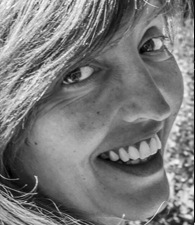 |
has a degree in dance from the Federal University of Bahia (UFBA), Brazil and has studied Ballet in the Royal Academy. Her early training is influenced by modern dance: Graham, Limon, Cunningham, Horton, the German Expressionism Dance-Theatre, and Improvisation. Professionals which marked her are Marta Saback, Aparecida dos Santos, Francesc Bravo, Katie Duck, Steve Paxton, Lisa Nelson, David Zambrano. As pedagogue, she has 30 years of teaching practice in Conservatories, Dance Centres, Universities, Festivals, Theatre companies, Dance Companies and collectives of various profiles.
The last thirteen years she has been teaching CI regularly, and is the director of Madrid CI Training in Estudio3. She runs OmosUno Co. a project of Improvised Dance&Music. www.omosuno.com |
|
| From the skin to spherical space |
Principles |
I propose in this class to return to inhabit the basic patterns of human movement (rolling, crawling, walking, running) and to immerse in the world of the spiral and the spherical space. To introduce the first contact we will use our hands and then allow them to travel to other surfaces of the body, investigating the quality of contact from the skin. The goal of the class is to be aware of the importance of these patterns in the practice of CI, also to experience the richness of sensations and opportunities offered by our hands and our skin. These relational spaces contain infinite posibilities for dialogue and open doors for us arising different qualities of contact in this world of sharing dances.
If I had to choose some words for this experience they would be: simplicity, clarity, openness and exchange. |
| Magdalena Radlowska |
PL/UK |
|
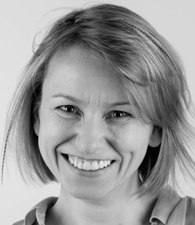 |
Contact Improvisation dancer, performer, choreographer, improviser, and teacher. Magdalena graduated from London Contemporary Dance School and Middlesex University in London. She has fifteen years professional experience in CI, contemporary dance, physical theatre and Improvisation. Magdalena was co-organizer for ECITE 2013 in Poland, and she has taught CI in many festivals in Poland and abroad. She regularly teaches CI workshops, and London Contact Improvisation classes, as well as being a lecturer in CI at Middlesex University. |
|
| IN-Tune |
Principles |
| How can I be in-tune with myself? We will look at awareness through breath, connecting parts of the body and then doing only what is necessary to effortlessly move with a partner in CI. Using Steve Paxton’s ‘Material for the Spine’ as inspiration, we will also explore principles of rolling points of contact, and with a partner on different levels. These will increase awareness of tonality and the muscle/skeletal system, enabling us to explore the spreading of weight, and dynamic partnering such as lifts and being airborne. Bearing all this in mind will help us discover how to be light and playful, but also maybe how to let go of patterns and habits. If we can be in-tune with ourselves, we can be in-tune with our partners. |
| Matthieu Gaudeau |
F |
|
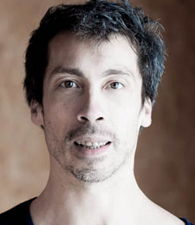 |
Actor-Dancer-Professor of Alexander Technique. He worked as an actor from 1997-2015 in theatre and dance companies and collectives. Between 2004 and 2006, he co-directed the collective "La Gouttière" in which he developed a specific work of dance-theatre and a specific stage language. He trained in the Alexander technique between 2009 and 2013 and began to reframe his teaching and his pedagogy through the principles of inhibition and directed attention. He is fascinated the organization of the human gesture and the relationship between attention and posture. From 2013 to 2016, he worked at the Etimoë center with people suffering from Alzheimer's disease. Since 2014, he works at the University of Amiens with the Master 2 Theater students, he participates in the ICI and ICrEA project and was invited to co-lead a workshop on the role of inhibition in somatic practices at the ENS. He is also a co-organizer of the International Contact Improvisation Meetings in Paris since 2014. A founding member of the ICI and ICrEA projects, he played a central role in developing experimental protocols around attention and joint attention. |
|
| Sharing the fall |
Principles |
| This class will explore and expand the joys of the Small Dance, one of the core practices of Contact Improvisation. Small dancing (a meditation on weight and the vibrancy of stillness while standing) is an amazing tool to tailor our awareness and become the passive-active witness of our micro-postural adjustments. Small dancing, we witness the appearance of the spine, the centre and the multiple orientations afforded to us. We get to experience the line of force between our two grounds: the floor (a support that we share with our partners); and our inner ear (an intimate support that orient us in space). I like to think the relation to the partner in Contact Improvisation as an opportunity to widen this passive-active observation throughout every plane of an experience that we share. In this expanded Small Dance, the classic tools of Contact (falling, touching, head-to-head, rolling point of contact, spiralling) are to be understood as ways to support, maintain, refine and complexify this deepening of mutual awareness. |
|
|
| top |
| Susanne Martin |
GER |
Double class |
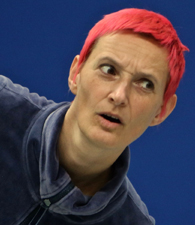 |
(Berlin) performs and teaches internationally. She focuses on Contact Improvisation, on improvisational approaches to performance making, and on practice as research / artistic research. For the past 20 years the love for Contact Improvisation leads her to make CI the base of her ongoing artistic exploration of being body and being social. Susanne studied dance at Rotterdam Dance Academy, Folkwang University, HZT Berlin and holds a PhD from Middlesex University. She recently published her PhD thesis “Dancing Age(ing)” in which she discusses the potential of contemporary dance in developing alternatives to stereotypical and normative age(ing) narratives in dance and every day life. www.susannemartin.de |
|
| Jam Sweet/Sour |
Principles |
| In these classes I want to collect and share with you strategies to enter a jam, to survive a jam, to surprise yourself, to find a focus. We’ll address and explore issues around dancing, watching, resting, studying, choice making, caring, fears, self-protection, finding and dropping energy, connection, and artistic pleasure while jamming. We’ll use the class to support each other in expanding our repertoires as jammers. |
|
| Jana Bitterova |
SLK/UK |
|
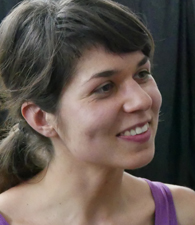 |
I am a dance artist, improviser and CI facilitator. I completed my BA in Dance Research and practice-based MA degree at the Academy of Performing Arts in Bratislava focussing on body awareness techniques in dance and improvisation (Master Thesis "Vertical axis of the body and its use in Contact Improvisation"). I have been leading workshops Wisdom of the Dancing Body and weekly Contact Improvisation classes (CI Bratislava and CI Cornwall at Falmouth University – UK). Working worldwide, I develop my artistic practice in collaboration with visual artists, ingeneers and musicians. I am a member of Free Three improvisational company. www.movementtouch.com ; www.freethree.net |
|
| Exploring the central axis |
Principles |
| In the class, we will practice the basic principles of Contact Improvisation with a focus on the central axis of the body and related body structures (spine). The aim of the class is to build a sensation of a strong and flexible central axis of the body as a useful tool for practicing Contact Improvisation. We will explore how to sense our central axis individually and with partner(s) and how to use it for playful Contact Improvisation. |
|
| Svitlana Pashko |
UA |
|
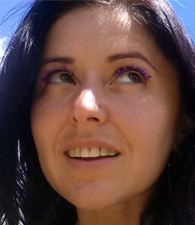 |
CI and dance improvisation teacher, modern dance choreographer, professional dancer, performer. Certified massage therapist (Chiang Mai School, Thailand), modeling designer (polymer clay crafting), economic degree. Over 20 years of regular practice in different dance techniques. Working with several dance groups and show ballets in Kiev (Ukraine) including P.Virsky Ukrainian National Folk Dance Ensemble. Dance background and experience cover various dance styles, from academic (classical, folk dance, modern, modern jazz, contemporary, CI) to subcultural (hip-hop, salsa, strip plastic, tango, etc.).Participating in various international dance projects. Over the last 10 years studying CI as well as exploring different approaches to movement such as authentic movement technique, axis syllabus system, release technique, body-mind centering, hatha yoga, acro-yoga, Laban movement analysis etc. Organizer of Kyiv International CI Festival in Ukraine during 2009-2014. Teacher and activist of Kiev (since 2008) & Moscow (since 2012) CI communities. |
|
| Tonus of the CI point |
Principles |
| The border which divides YOU and ME. Where is it? How do we know where is MY end and YOUR beginning when we touch the OTHER one? We often think that the skin is the border on the level of body. All what is under the skin - my inner, and what is behind it – is the so-called outside world. This class is the opportunity to look closely at the Contact "points" of our body with the partner or the floor, perhaps even with the air and clothes. By loosening or tightening (amplifying) the tone in the area of touch, we allow the other one to come in, and we enter into their structure, or we stay separated in order to create a possibility for the support to appear. |
|
|
|
|
| SATURDAY |
| Cristiane Boullosa |
|
Double class |
| |
See first description |
|
| |
|
| |
| Brandon Gonzalez |
USA |
|
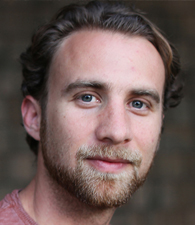 |
is an interdisciplinary artist and teacher working in the USA and Europe. As a former martial arts practitioner, Brandon began using his body as an artistic medium when introduced to the physical proposals of Contact Improvisation. Engaged with dance improvisation as a field of inquiry and movement research, he joined Nita Little’s Dance Research Laboratory along with Ray Chung and other San Francisco based artists. His interdisciplinary performance work and collaborations have been presented at the San Francisco Art Institute, Modern Art Museum of Fort Worth, Dallas Contemporary, Avignon OFF, WUK (Vienna), FemArt Festival (Kosovo), and SUNDAY RUN_UP (Stockholm). |
|
| Living Bones |
|
| Bones are not static or lifeless; they compose a living system that intelligently adapts to our movement choices. The bones are constantly rebuilding, reconstructing, and even changing shape from the impact of our daily activities. Suspended in a complex web of connective tissue, they create elastic structures that are both very strong and very mobile. Let’s spend some time getting to know these structures and the movement potentials they offer our dancing. Hands-on exploration of bone anatomy, solo movement, and Contact Improvisation will make up our modes of working. How will these living bones inspire us? This class is open to participants of all skill levels. |
|
| |
|
| top |
| Susanne Martin |
GER |
Double class |
| |
see description above |
|
| |
|
| |
|
|
| Vanessa Grasse |
I/UK |
|
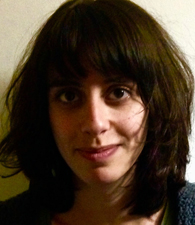 |
is a choreographer, dancer and teacher. Her work includes site-specific performance, installations, dance&music instant composition and choreographic walks. She holds an MA in Creative Practice Dance from Laban in London, with a focus on bridging somatic practice into creative practice and exploring urban improvisational walking practices. Her research is grounded in her studies of improvisation and Contact Improvisation with Lisa Nelson, Julyen Hamilton, Daniel Lepkoff, Kirstie Simson, KJ Holmes amongst many others. She teaches CI for wider communities and Universities in the UK and runs the Leeds Contact Improvisation with regular classes and jams. www.vanessagrasse.wordress.com |
|
| Entangled pathways |
|
| What kind of paths do we create and navigate through our felt and kinaesthetic sense, through touch and space? Can our dances be a continuous journey rather than a series of episodes? By focusing on journeying and inner and outer pathways, we will feed our own individual exploration within the contact dance and play with how these paths can entwine and tangle with others. Exploring the physicality of 'knots', where tangling up is allowed! Knots are like an embrace, a weaving of bodies and trajectories. We'll allow ourselves to tangle and untangle with both flow and playful dynamics, we'll then knit a dynamic blanket through which we can experience interdependence with the whole group. |
|
| Cleo Laigret |
F |
|
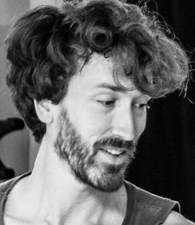 |
Set designer, dancer, and co-creator of the dance company «Les Monstres» in 2012. He is currently conducting researches about the continuity/discontinuity in the movement. His experience in performance was born in Contact Improvisation and Butoh dance as well as in contemporary art, and then grows with regular laboratories and in situ performances. He trained with Gyohei Zaitsu, Stephanie Auberville, Yumi Fujitani, Daniel Lepkov, Adrian Russi, Jules Beckman among others. He participates in collaborative projects with Gyohei Zaitsu, Zack Bernstein, Didier Silhol... He teaches regular classes as well as workshops or festivals, mainly in France (Paris, Tours, Grenoble). He often teaches in partnership with local or international teachers. |
|
| Yes/No: to accept & to refuse |
|
In a sense, the «flow» seems to be a cooperative dance, where each partner somehow do accept the maximum of the proposals from the other(s) partner(s). In this case, acceptation («say yes») opens a fluid and soft experience.
It is also true that in certain situations we need the partner to give some resistance in order to achieve something together - «to give resistance» is also part of the cooperative dance? How can we distinguish the different kind of resistances, the «yes» resistance and the «no» resistance?
To feel a «No» from my partner can be experienced as a limitation in our dance. What if we consider it as an input or even a support? |
|
|
|
|
| MONDAY |
| Ezra LeBank |
USA |
|
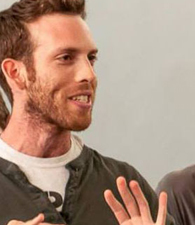 |
is the Head of Movement and Associate Professor of Theatre Arts at California State University, Long Beach. He has taught at The Juilliard School, Purchase College, Smith College, The University of Montana, and Vassar College/Powerhouse Theatre. He teaches and performs across the world including recent workshops and festivals in Sweden, France, Poland, Italy, Germany, Belgium, Russia, Ireland, England, Scotland, Mexico, Guatemala, Costa Rica, Israel, Estonia, Canada, Malaysia, Australia, and across the United States. He is recognized as a specialist in Biomechanics, Contact Improvisation, Acrobatics & Clown. His book Clowns: In Conversation with Modern Masters is available from Routledge (UK). |
|
| Falling Upwards |
|
Aikido, acrobatics, and CI principles merge as we explore the creative science of moving floorward. By erasing the concept of falling, and replacing it with floorward movement, we learn to make the floor our ally, and we expand our directional capacity with intention and softness.
After building a floorward foundation, we begin falling upward! Discovering the open and friendly skies through a variety of structures, patterns, and principles that allow us to move through a full palate of planes, tempos, and structural relationships.
Designed to invite a wide range of experience levels to approach the material from their present state of awareness. |
| Michèle Tarento |
F |
|
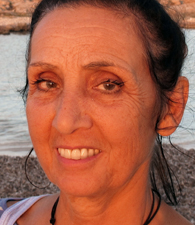 |
She studied CI with Didier Silhol, Suzanne Cotto, Mark Thompkins, Steve Paxton, Lisa Nelson, Nancy Stark Smith, Nita Little, Adrian Russi, Joerg Hassmann She has graduated in Post modern Danse and Teaching (including CI teaching) She is a Senior lecturer of Histology, Biology and Embryology. Osteopath, Medical Doctor, Voice therapist. Bioenergy practitioner. Posture in bioenergy is one aspect of our character.
Ostéo éveil® (osteo awareness) conceptor «Osteo awareness» is a physical approach to optimize body consciousness, posture and movement adaptability.
She is a Biotensegrity Interest Group (BIG) researcher - Biotensegrity is a new representation the body’architecture conceived by Steve Levin. |
|
| Tensegrity perception |
Somatics into CI |
| During this class, I will propose tools to reach physically our tensegrity. We’ll perceive the biotensegrity synergic forces, their specific distribution inside the bone-myo-fascial system and progressivly our touch becames more aware. To improve our tensegrity (and consequently our posture and movement) Tension and compression are respectivly accumulated inside soft tissues and bones. Bones and soft tissues within the bodies tensegral architecture have a « high level of internal dynamism”, particularly the bones ; their potential energy participates to our movement. To improve our tensegrity (in order to improve our comfort) and we will discover the physical tensegral parameters of our comfort dynamism. |
|
|
|
|
| TUESDAY |
| Filip Wencki |
PL |
|
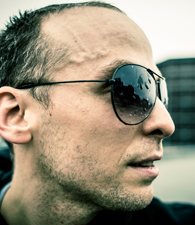 |
Contact dancer, improviser, physical actor, director and teacher. Cofounder of the physical theatre/dance company The line of night. Member of an international theatre research group The bridge of Winds lead by Odin Teatret. In the past occupied with traditional martial arts (Aikido, Wing Tsun) and modern fight systems (Krav Maga, Brasilian Jujitsu). For years now occupied with contact dance and physical movement. Performs and teaches internationally both for dance and physical acting (Columbia, Thailand, Denmark, France, Czech, Poland). After years of training, still surprised by the endless possibilities in movement and expression. |
|
| The secret art of the contact improviser |
|
| I would like to invite you into the journey, into the dance. The dance has it’s flow on the floor, when your body is light, mobile, and full of water. And it has its flow on higher levels when your body is full of air and lightness. The dance can take you off-balance and up-side-down. You can experience it in-fall or up-raised, or lost & found in the three dimensional space. In the class we will experiment with techniques that make a CI dance vivid, alive, and rewarding. |
| Trinidad Garcia Espinosa |
E |
|
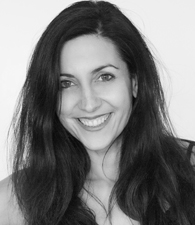 |
BCN, dance improviser, choreographer and a teacher oriented in CI and contemporary dance: performer and activist. After early classical & contemporary dance training she begins her formal education at Institut del Teatre in Barcelona in 1994, as a dance performance student.
Having previously experienced and practiced CI, she received instruction and additional formation from Mary Prestidge, Karen Nelson and Steve Paxton at the Liverpool Institute for Performing Arts. Later in New York she dances and trains at BMC, @DanceSpace and Movement Research and she participates in several CI jam sessions.
From 1999 to 2000 she lived in Berlin, working as a performer and developing personal projects around contemporary dance, movement, and video.
She returned to Barcelona in 2001, where she manages a space for dance training, creation, and live music (Sala Deria). |
|
| From release to movement analysis |
Somatics into CI |
| A continuous re-learning of organic movement, will provide our body and mind the authenticity of movement, smooth quality, fluid and effortless. I am talking about the desire that propels (impels, provokes, generates) a new action, and the background of those actions. “The first second” consist in a body movement analysis, a dynamic development, in the basic competence of re-learning itself, in the sense of practicing an attitude of self exploration towards a better knowledge of ourselves; relearning to learn, learning to focus oneself within the movement, an exploratory attitude on the construction of knowledge. An experimental approach to observe the relationship between movement, thinking, perception and emotional feeling. |
|
|
| |
| MUSICIANS |
| Ivan Vendemiatti |
BR |
|
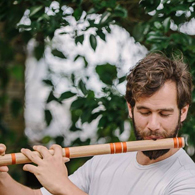 |
OIvan Vendemiatti is a brazilian musician and dancer, living in Rotterdam for his graduation in World Music Department at CODARTS, studying Classical Indian Music, Brazilian Music and composition.
He mostly plays Bansuri (transversal bamboo flute) and Viola Caipira (10 string guitar), and he has been traveling to India, Nepal, Europe, US, and many states in Brazil, researching influences for his compositions and improvisations, meeting and colaborating with different artists.
For CI festivals he played in In-Touch and Goa Contact Festival (India), Skiing on Skin (Finland), Festin (Argentina), Transformando pela Prática, Igatu CI Festival, Festival de CI in São Paulo (Brazil).
Ivan is very interested in interdisciplinary-transversal dialogue in Arts: music, dance, visual arts, poetry, philosophy. Overflowing artistic areas to unfold whats is unique in Creating, experiencing Presence.
In JAMs he researchs Music and Silence and the transitions in between. How and why to play in a Jam? How to enter with Music, wich moment, wich intention, with wich Body? Dancing-playing-openning a multidirectional perception, affecting time-space-attention through Moviment/Stilness and Music/Silence. |
| |
|
| Charlie Rabuel |
F |
|
 |
i |
|
| |
|
|





















